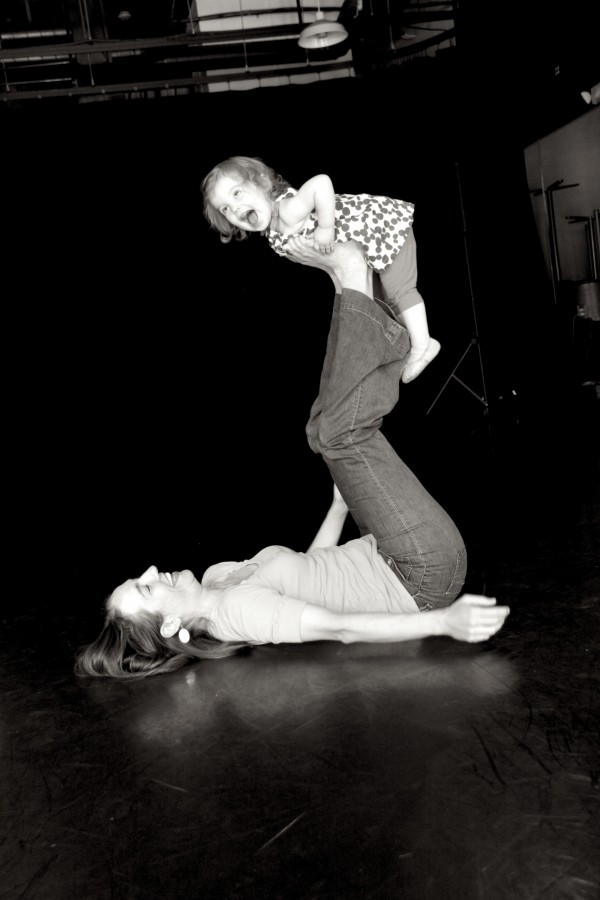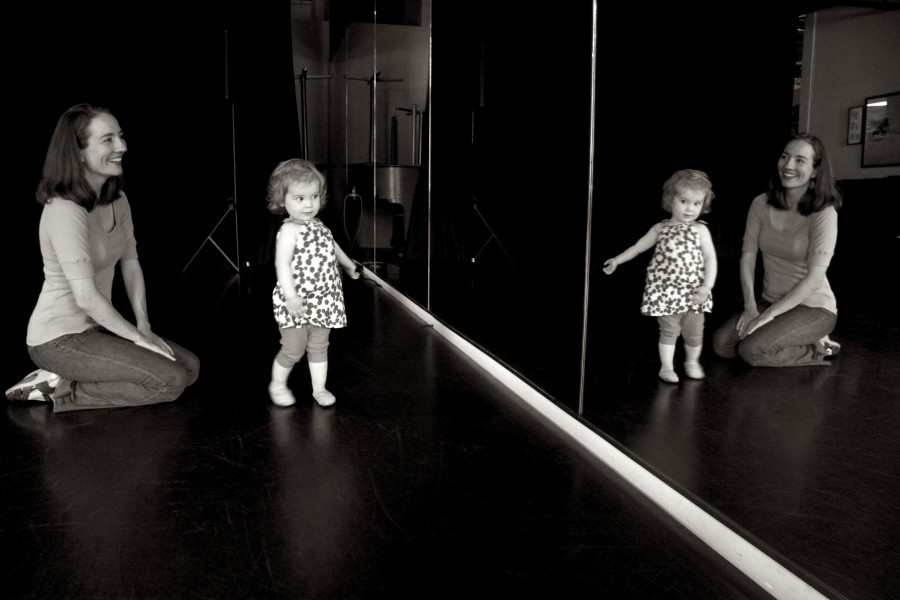Hilary Thomas
dancer, philanthropist, educator, director, visionary, mother…
As with many of the individuals featured in the Power of One, clarity of vision is a characteristic that has guided Hilary Thomas throughout her extraordinary career. The nuances of non-profit work and running a dance studio were not necessarily anticipated in 1999, when she created Lineage Dance Company. Nevertheless, the desire to support other fledgling non-profits and to provide arts programming that would be accessible to all were definitely priorities from the start.
Knowing the challenges that there are in identifying consistent funding for the community based programs, Hilary and the other members of Lineage Dance have used their talents to raise nearly $200,000 for numerous nonprofit organizations. In addition, understanding the reality that many people in our community can’t afford to attend dance, ballet or musical performances, she has prioritized offering high quality programs at a very reasonable price.
One of the other important features of the LD model is the use of dance and movement in therapeutic ways. From seeing choreography as therapy, to offering classes for persons with Parkinson’s Disease, Hilary is dedicated to finding ways for dance to raise the spirit and strengthen the soul.
Now that Hilary and the other members of Lineage Dance have started families, the studio has become a nursery for a new generation of dancers, artists and movement therapists. Her daughter is already learning how to glide through this special place with grace and elegance, just like the children of the other members of Lineage Dance. These kids are learning to dance with the same passion, creativity and commitment as their mothers do.
Conversation with Hilary Thomas about the untapped power of dance and what it means to create greater awareness and support for the arts:
How did you fall in love with dance?
That is a tough one to pin down. I was told I was dancing before I could walk. . .I guess it was just inherent in me from the start.
Certainly there are millions of dancers in the country, but very few of them have started their own dance companies. What inspired you to form one? What is your vision for LD and how has having a space in Old Pasadena assisted with the achievement of that vision?
It was all rather accidental. I wish I could say I had this amazing vision from the start and just followed it. In reality, I just love dance. . . and I love my community. I wanted to be able to support the amazing work going on through various nonprofits but didn’t have a cent to my name. So I just decided to put together a performance to benefit Young and Healthy – an organization that was particularly close to my heart because of my dad’s involvement in it. That was back in 1999 and I never dreamed that it would lead to the Lineage that exists today. I think my biggest problem has always been that I am addicted to creating and choreographing. Because of this addiction, I keep moving forward, always saying yes when an opportunity presents itself, and push ahead with my wacky dreams, no matter how unattainable they seem.
For years we talked about opening a Performing Arts Center. I never ever imagined it would actually happen but for whatever reason we were crazy enough to do it four years ago; it was the best move we ever made. It has certainly been tough – there is no doubt about that. But the magic that happens in the space really floors me on a daily basis. Between the healing happiness emanating through every member of the Dancing with Parkinson’s or Stroke Recovery class and the incredible musicians, artists, and dancers constantly being able to share their work, it is a privilege that I get to call this place my home. It somehow seems even more special to me now that I can share this home with my two year-old daughter and see it all through her eyes.
Obviously, as with most non-profits you and your colleagues are not earning a living from participation in LD, so how have you managed to stay so connected to your art and find other ways of paying the bills?
Oh man – it has been pretty hairy at times. Just when I’m ready to throw in the towel, something incredible happens. A new donor comes along or we receive a new grant that gives us a new sense of hope. Honestly I don’t know how we have managed to keep the doors open but every year we get a little stronger and I have faith that we aren’t going anywhere any time soon!
Our community is rich with non-profits, certainly some would see that as a disadvantage, so how have you collaborated with other organizations and what has been the impact?
Aside from having so much fun connecting with and getting to know new nonprofits around town, I find that as an artist, I’ve been incredibly influenced by the work of these organizations. The majority of our performances have been created in partnership with a nonprofit organization – whether it be one that works with breast cancer support, Parkinson’s research, suicide prevention, or arts education. As collaborating organizations, we are able to double our audience, double our impact, and really create events and awareness that we are proud of.
Funding issues aside, what would you consider to be your greatest challenge as a non-profit?
It’s hard to find anything that we struggle from that doesn’t lead back to funding as the fundamental issue. . . I suppose our problem is keeping up with ourselves. There are so many amazing ideas that come through our doors on a daily basis. As I mentioned before, I’m kind of a “yes” girl when it comes to cool ideas so having the resources, staff, and time to keep on saying yes can be challenging.
Many dancers feel that there is a certain ‘look’ that they must possess in order to be successful. You have commented before that your company is not concerned about its dancers fitting a particular mold physically, so what is your perspective on the high expectations that are placed on dancers to look a certain way.
Growing up as a ballet dancer, body image was really all it came down to in the end. If you didn’t have the right body, you would never be able to make it as a professional dancer, no matter how good you were. That is a really tough way to form your sense of self-worth. Today, I’m so grateful that I’m able to do what I love and not worry about having to fit into a certain mold. I find that I’m only interested in watching dancers who show true passion while they are moving – no matter what they look like.
How are dance and choreography used as therapy? In the past year you wrote and directed a dance performance/play that deals with mental illness, so how have you used your exceptional talents to deal with personal emotional/psychological issues?
For me dance is therapy. Choreography is therapy. Sometimes I think I use it too much as a way of processing difficult or painful experiences. However, it is extremely effective for me and pushes me in ways that regular therapy can’t seem to touch. When someone close to me passes away, instinctually I know that I need to create a dance before I can even begin to process my grief. When I hear a story that moves me powerfully, I process my feelings through choreography. That choreography doesn’t always make it out of my head, but something about its existence is comforting to me.
Your father is one of the most recognized and influential people in Pasadena, how has he shaped your view of the world?
My dad is always surrounded by incredible people. Creative people. Philanthropic people. Funny people. Brilliant people. He has a way of connecting all these people and unifying them to create positive change in the world. I think without realizing it, I followed his path by creating a space where wonderful people could congregate and spark all kinds of exciting artistic and passionate endeavors. Many of the people I collaborate with today are “his” people. People who know Don Thomas know that if he introduces you to someone, that someone is very likely to become a big part of your life in the future.
Can dance save the world?
As much as I’d love to say “yes” it feels like too bold of a statement. What I can say with complete certainty is that dance makes the world a better place. On a daily basis I see how dance brings healing to people suffering from chronic illness, allows audiences to access emotion in visceral ways that words can’t convey, encourages people to move and express in ways that fuel the soul, and brings a pure joy to people of all ages, all levels, all abilities.


